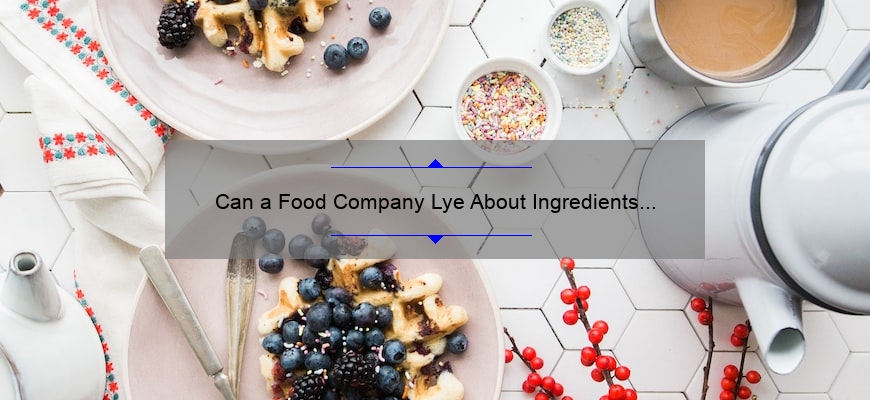Unfortunately, many manufacturers are dishonest when it comes to nutrition labels. These labels are usually deceptive, misleading, and false. For instance, they may claim their high-sugar breakfast cereal is healthy. In reality, this type of food is not. Often, the front label is created to entice people to purchase a product. The front tag will list the ingredients of a food product in order of quantity, with the first ingredient being the most common.
Avoid processed foods
If you are looking for ways to lose weight and get in shape, it can be helpful to avoid processed foods. These foods are high in added sugar and sodium, and their high-calorie content can lead to weight gain. Additionally, they may cause cancer. Therefore, it’s important to read nutrition labels before choosing processed foods.
You can avoid processed foods by choosing foods with few ingredients. Foods with fewer ingredients are healthier. It would help if you also looked for fresh food sections. Also, choose meats that are less processed and have fewer ingredients. Hearts that are heavily processed are not suitable for you. You should also avoid fast foods that are fried: the more wholesome foods you choose, the better for your health. You’ll feel better and have fewer cravings for unhealthy foods.
Processed foods are foods that have been prepared with artificial ingredients and preservatives. These ingredients are used to enhance flavor and extend shelf life. Some additives can be healthy for you, but others are not. Always read the label to see what ingredients you should avoid. A healthy diet can include some processed foods, such as fresh fruits and vegetables, as long as they’re prepared minimally processed.
In addition to being processed, these foods are often high in fat, sugar, and sodium. They’re also a leading cause of high blood pressure and obesity. Many processed foods are also healthy but high in fat and salt. So, you should be aware of these labels when shopping for processed foods.
If you’re looking for healthy foods, you’d be better off looking for foods that are naturally low in fat and sugar. These include whole-grain or wheat bread, as well as pre-cut vegetables. Natural fruit juice is also healthy, and many bowls of cereal have added fiber.
Eat more whole grains.
The Dietary Guidelines for Americans recommend that half of our daily grain intake be from whole grains, but the reality is that many Americans fall short of this target. On average, Americans only consume about 6.4 ounces of whole grains daily. Even though eating good whole grains has been linked to reduced risk of heart disease, type 2 diabetes, and digestive problems.
When choosing grain-based foods, check the ingredients list for whole grains. Look for products that list whole-wheat flour as the first ingredient. Foods containing sugar and corn syrup shouldn’t be first on the list of ingredients. Whole grains are full of fiber and protein. Processed flours often aren’t labeled as such and instead contain refined ingredients.
The good news is that RDs can teach clients to incorporate more whole grains into their diets. The first step is to educate clients on how to read food labels. Manufacturers must list ingredients in descending order, and whole wheat flour or rye flour should be listed first. While many marketers try to muddy the water by using buzzwords like “100% whole grain,” these words don’t mean that a product is 100% whole grain.
Even the health benefits of whole grains can be masked by the number of unhealthy ingredients in processed food products. Some products labeled as “made with whole grains” contain only a few grams of whole grain per serving. Another common phrase is “made with whole grains,” which means that the product includes some whole grains but doesn’t say what kinds of grains were used.
A new study suggests that food labels don’t tell us the truth. A recent study in Public Health Nutrition suggests that about half of us don’t know the actual composition of whole grains. Researchers suggest that government regulation of food labels could help make the entire grain claim more accurate.
Avoid foods with added sugars.
If you’re trying to lose weight, one of the easiest ways to reduce your daily sugar intake is to avoid foods with added sugars on nutrition labels. Adding sugar to foods is highly processed and difficult to spot, so it’s best to stick to whole, unprocessed foods. However, if you must eat processed foods, it’s essential to know how to read nutrition labels for added sugar.
Nutrition Facts labels list the amount of added sugars in food products and their associated health risks. These warnings are designed to help consumers make intelligent food choices and minimize the intake of added sugars. However, consumers may not always use this information to make healthy choices. One study conducted a randomized experiment that focused on five different product categories. The study recruited 490 U.S. adults who answered questions online and were randomly assigned to a high or low level of information.
A recent study by GreenChoice revealed that nearly 60% of the food and beverage products tested contained hidden sources of added sugar. This includes sugars naturally present in the food and those added during processing. Foods containing added sugars often have unrecognizable names, which makes them difficult to spot.
The research also showed that when consumers had access to added sugars information, they were more likely to make healthier choices. In other words, they could buy products with low added sugars more efficiently. As a result, this information should be made widely available and easily understood by consumers.
The FDA is considering a change to the nutrition labels. It’s time for food manufacturers to start including updated nutritional facts labels on their packaging. This change is intended to decrease the burden of diabetes and obesity. By 2020, food manufacturers must add a line containing information about added sugars on their nutrition facts labels.
Avoid foods with high levels of sodium.
You should avoid foods with high sodium levels on the nutrition labels when eating out. When possible, opt for fresh, low-sodium alternatives. For example, you should choose poultry and fish without added salt and avoid processed meat. Instead of salty sauces, try choosing low-sodium canned vegetables—also, order salad dressings on the side. Look for low-sodium versions of pretzels, nuts, and seeds for snacks.
You can also avoid canned soups, which have high sodium levels. A single can of Campbell’s chicken noodle soup has about 2,225 milligrams of sodium, making it an unhealthy option. Fresh vegetables, such as sliced tomatoes and avocado, contain lower sodium levels. Also, canned vegetables should be rinsed well to reduce their sodium content. For example, half a cup of raw carrots or green beans has about 6 mg of sodium.
If you have high blood pressure, you should try reducing your intake of foods with high sodium levels. You can do this by experimenting with lower-sodium foods and seeing how your body responds. Adjusting to lower-sodium meals and snacks may take a couple of months. Eventually, your taste buds will adapt, and you will find less salty and tastier foods.
When shopping, it is essential to read the nutritional labels on food labels to ensure you get the right amount of nutrients. It would help if you looked for foods that contain less sodium than 140 milligrams per serving. It would help if you also tried to choose fresh whole foods whenever possible.
Avoid foods with high levels of saturated fat.
To avoid cardiovascular disease, limiting your intake of saturated fat is essential. These fats are solid at room temperature and correlate with high cholesterol and heart disease. While there are some exceptions, you should avoid foods with high levels of saturated fat. Instead, opt for unsaturated fats found in plant-based oils and nuts.
Choosing foods with lower levels of saturated fat is an effective way to lower cholesterol. You should increase your intake of fruits, vegetables, and fish and limit your intake of cheese and butter. Choose leaner meat cuts and avoid frying, breading, and other unhealthy cooking methods. When cooking, you should also use low-fat cheeses and two egg whites instead of a single yolk.
Saturated fat is associated with elevated LDL cholesterol, which can lead to blockages in the heart and lead to heart disease. It would help if you aimed for a dietary intake of fewer than 120 calories of saturated fat per day. It is best to stick to the recommendations of the American Heart Association, which recommends that adults consume no more than 20 grams of saturated fat daily. The highest saturated fat content in food is found in beef. A 100-gram serving of beef contains 4.5 grams of saturated fat.
The Dietary Guidelines for Americans 2015-2020 state that saturated fats should be limited to less than 10 percent of your daily calorie intake. That means you should limit your intake of these fats to 22 grams daily. The most common sources of saturated fat are animal sources, such as red meat and processed meats.



